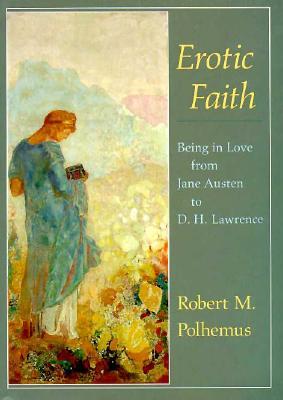I once had the privilege of hearing Professor Polhemus deliver some of these pages as a lecture—the passage on the terrible end of Miss Havisham in Great Expectations, which I have found as superb to read in 1990 as it was to hear in 1986. I also once heard—and watched—him do a number on The Old Curiosity Shop, in which he not only recited a passage from Dickens but came close to acting out all the parts. When he is in this vein, we might say of him what Betty Higden said of a foundling in Chapter XVI of Our Mutual Friend: “‘You mightn’t think it, but Sloppy is a beautiful reader of a newspaper. He do the Police in different voices.'”
Professor Polhemus can be a very funny man. He ought to be. After all, he is the author of Comic Faith: The Great Tradition from Austen to Joyce (1980), in which he argued that there was promoted in a certain continuum of fiction a comic sense that served as a uniting faith—a special religion of the humorous dispensation. That argument stands on its own merits; but I think that the earlier book’s case was a more sustained exposition of a narrower thesis.
Nevertheless, the brilliance of Polhemus’s free-wheeling, vigorous, and exhilarating textural forays, commentaries, analyses, and speculations in Erotic Faith cannot be denied. No one who cares about Dickens can afford to miss “The Fixation of Love,” Polhemus’s chapter on Great Expectations in Erotic Faith, and his dissection of the scenes of Miss Havisham’s combustion and death needs to be read in its entirety.
As we should expect, there are various other passages and chapters that those who care about the British novel and about literary criticism would not want to miss. Because Polhemus is a master of metaphorical investigation, an accomplished wit, and an eloquent expositor, we can always find something valuable in his pages. I particularly relished, for example, the parts on Charlotte Brontë’s Villette and Hardy’s Far From the Madding Crowd. But I also found that the more I read of it, the less I was pleased with his book as a whole.
In the first place, his argument about the love religion is basically a rehash of what everyone has known for a long time. The rise of romantic love in the 12th century has always been recognized as a Christian heresy concurrent with the Cathars, one no doubt influenced by the Moors. Dante’s subtle rendering of Paolo and Francesca puts romantic love in perfect perspective, and implies a judgment lacking in Polhemus, though the sympathy is not. Polhemus’s claim that “the novelists . . . created the job” of telling what it means to be in love just isn’t true. The troubadours and other poets did, well before the British 19th century that Polhemus knows so well. And we might add that Vergil and Ovid and the Renaissance and Restoration playwrights stood in the background, the literary memory of British novelists. There was romance before Romanticism, love before novels, passion before the Brontes, coitus before Dr. Ruth, and the War between the Sexes before feminism (though not, of course, with as much cause).
In the second place, Polhemus has daringly thickened a complex argument with an apparatus of art criticism. I think he has not so much enriched his exposition as he has muddled it. His analyses of various paintings are provoking and illuminating, but are a needless counterpoint to an already demanding discourse. The interdisciplinary experiment reminds me that Robert K. Wallace’s fine books, Jane Austen and Mozart and Emily Brontë and Beethoven, are oddly missing from his bibliographies—oddly, that is, from a compiler who attempts to compare the arts while writing about Austen and Emily Bronte.
A third point is a sag of standards of mind and expression. There could be only one thing more disheartening than seeing one of the most penetrating minds in academe co-opted by feminist jargon—”sexism,” “gender identity,” etc.—and that is to behold a straight-faced assertion that D.H. Lawrence’s absurd celebration of sodomy in Lady Chatterley’s Lover “has an intentional religious resonance.” How quickly, even in an extended essay, we move from Pride & Prejudice to anal intercourse, sliding down the slippery slope.
I think Erotic Faith is undermined by an error that becomes more obvious as the book proceeds, which is to confuse art and life. Even the canny Polhemus stoops to pleading that a certain fictional passage is “good” because . . . life is like that: “Somehow that mock prose [in Ulysses] really does represent the spirit and pleasure of orgasm.” And a sentence like the following one must give us pause, being both untrue about Erotic Faith, and, I daresay, about erotic faith as well: “As I have tried to make clear, what’s missing in nineteenth century novels is the direct rendering of those moments of high intimacy and religious oneness that sexual intercourse can bring.” That’s a bit of a downer after 282 pages—there’s something defective with those same novels we were supposed to love for their erotic power! Robert Polhemus’s study seems to contradict itself in that way and in others; but because of its striking insights and powerful arguments, the book succeeds. Whether the horse he insistently beats—secular humanism, sentimental version—is dead meat, that is another question.
[Erotic Faith: Being in Love From Jane Austen to D.H. Lawrence, by Robert M. Polhemus (Chicago and London: The University of Chicago Press) 376 pp., $29.95]



Leave a Reply